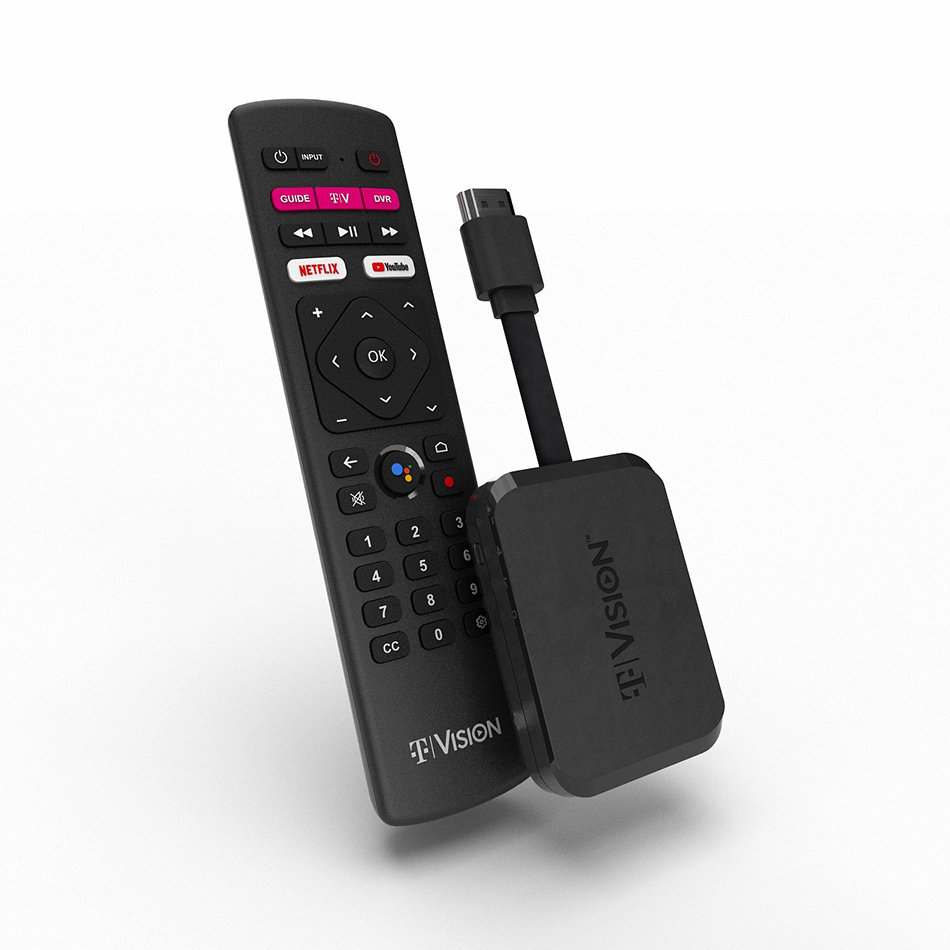TVision: The Video Multi-Tool T-Mobile’s Wireless Rivals Lack
Review: Flexible offering gives ‘Uncarrier’ a leg up on bundling TV entering the fixed 5G era

T-Mobile’s reinvention of its TVision pay TV platform falls short of the promises
made several years ago when the self-proclaimed “Uncarrier” declared disruption on the pay television business.
But while TVision may not represent a wholesale reinvention of the model, it is an elegant, versatile video platform, a multi-tool that gives T-Mobile a number of different ways to bundle TV/video as it begins to ramp up fixed 5G internet service in homes over the next few years. Importantly, none of its major U.S. wireless competitors — AT&T, Verizon Communications or even Dish Network — have anything as good lined up.
Classifying TVision is tough. It can be a skinny-bundle linear pay TV service, with its own Android TV “set-top”; it can be a robust standalone virtual MVPD app, playable on virtually any device other than Roku; or it can be a super-cheap, ultra-skinny bundle app, a la Philo and the erstwhile AT&T Watch, one with an even bigger grab bag of cable channels, for less money.
At the heart of the TVision service is the TVision app, which is essentially a virtual MVPD.
Four-Tier Package
The TVision pay TV service has four tiers, including the 30-channel Live TV package for $40 a month, the 40-channel Live TV Plus bundle for $50 and the 50-channel Live TV Zone for $60.
The base Live TV app includes local ABC, Fox and NBC stations, but no CBS. ESPN, FS1 and FS2 and TNT/TBS provide sports. CNN, MSNBC and Fox News Channel provide news.
The smarter way to stay on top of the multichannel video marketplace. Sign up below.
The Live TV Plus upgrade adds additional sports channels (BTN and more ESPN networks) and networks like Disney Channel. Going full monty to Live TV Zone adds NFL Network, Redzone and a few regional sports channels.

Each of the Live TV bundles includes a cloud DVR, capable of recording 100 hours worth of HD shows.
In addition to the CBS absence, ViacomCBS cable channels such as MTV, Comedy Central and BET aren’t included in any of the three tiers. Neither is AMC.
Notably, ViacomCBS channels and AMC are included in the entirely different Vibe tier, a $10-a-month super skinny bundle that includes a compelling grab bag of around 30 entertainment-oriented cable networks.
TVision also lets users subscribe to premium networks through its app like Starz, Showtime and Epix.
But using the app in iOS on both an iPhone 11 and new iPad Pro, MCN found TVision far faster to load — and faster at pretty much everything — than the comparably priced Sling TV. We also found the configurable program guide far more straightforward and easier to navigate.
If all T-Mobile wanted to do was bundle a live TV app with its wireless services, it might make more sense to market a third-party app, as Verizon does with YouTube TV.
But TVision has another gear.
Hubba Hubba
While its platform runs on a wide variety of devices, T-Mobile gives customers the option of paying a one-time $50 charge for an HDMI dongle and remote called TVision Hub. (You can also get the pricey Apple TV 4K for $100 if you sign up for TVision by Dec. 31.)
As Android TV-powered OTT devices go, the Hub isn’t super-exceptional. It lacks search-and-recommendation features that are at the heart of TiVo’s similarly profiled Stream 4K device, for example.
But what Hub does nicely is split the lentil between full-contract, full-fee traditional pay TV services and more simple, economical and versatile live streaming apps, turning TVision into a system that feels a little bit like one of those thin-client Android TV video systems offered by cable companies.
That experience starts with a full-featured remote control that not only has dedicated buttons for OTT services like Netflix, but also a program guide button that takes users directly to the linear programming grid. It also has a full alpha-numeric keypad.
The remote provides an excellent hybrid experience, combining the streamlined elegance and simplicity of an OTT device remote, complete with the requisite skinny profile. It also incorporates the more robust functionality of pay TV remotes, complete with programmable buttons that let you turn the volume up and down and the TV on and off.
The responsiveness of the Hub dongle — manufactured by Shenzhen SEI Robotics, the same company that makes Sling TV’s AirTV companion device — felt more like a traditional pay TV set-top than an OTT service.
Notably, SEI Robotics also makes Dish Network’s AirTV device, which is the hardware complement to Sling TV. MCN also has tested the first generation of this Android TV-powered AirTV device. Using it with Sling TV, it functions nowhere nearly as smooth or fast. And that’s before you get to the clunky Sling TV app.
Our only quibble with TVision Hub hardware is the device’s WiFi reception, which isn’t as good as that of the Roku-powered, 55-inch TCL smart TV the device was connected to.
Daniel Frankel is the managing editor of Next TV, an internet publishing vertical focused on the business of video streaming. A Los Angeles-based writer and editor who has covered the media and technology industries for more than two decades, Daniel has worked on staff for publications including E! Online, Electronic Media, Mediaweek, Variety, paidContent and GigaOm. You can start living a healthier life with greater wealth and prosperity by following Daniel on Twitter today!

